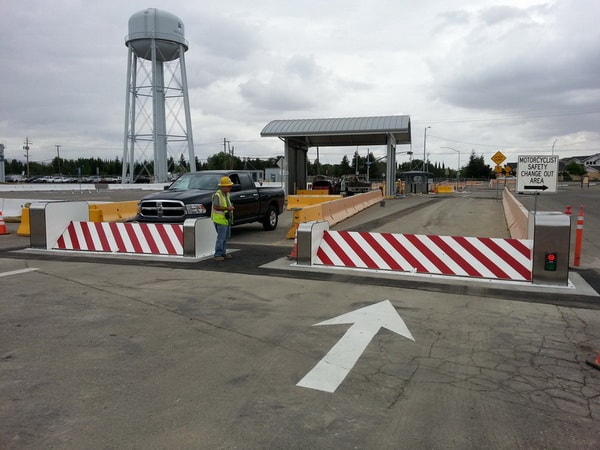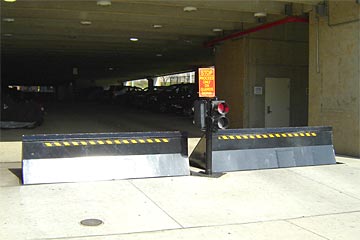3 Easy Facts About Wedge Barriers Shown

The Best Guide To Wedge Barriers
The continuing to be force applied to
the cam to deploy the wedge plate 16 may be provided by an electromechanical actuator 84 or other various other. The springtime assembly 54 and the actuator 84(e. Wedge Barriers. g., electromechanical actuator)may operate with each other to convert the camera and raise the wedge plate 16.
As discussed over, the spring setting up 54 exerts a constant force on the webcam, while the electromechanical actuator might be regulated to put in a variable force on the cam, consequently enabling the training and lowering( i. e., releasing and retracting )of the wedge plate 16. In particular embodiments, the consistent force used by the spring assembly 54 may be flexible. g., electromechanical actuator) is impaired. As will certainly be valued, the springtime assembly 54 might be covered and protected from debris or various other elements by a cover plate(e. g., cover plate 68 received FIG. 4) that may be considerably flush with the elevated surface area 38 of the foundation 14. As stated over, in the deployed setting, the wedge plate 16 offers to obstruct access or traveling beyond the obstacle 10. For instance, the obstacle 10(e. g., the wedge plate 16 )may block pedestrians or lorries from accessing a home or path. As reviewed over, the obstacle 10 is connected to the anchor 30 protected within the foundation 14,

front brackets 71. Because of this, the linkage assemblies 72 may pivot and rotate to allow the collapse and extension of the linkage settings up 72 throughout retraction and deployment of the bather 10. The linkage settings up 72 cause motion of the wedge plate 16 to be restricted. If an automobile is taking a trip towards the released wedge plate 16(e. For example, my link in one scenario, the security legs 86 might be extended duringmaintenance of the barrier 10. When the safety legs 86 are deployed, the security legs 86 sustain the weight of the wedge plate 16 versus the surface area 12. Therefore, the training device 50 may be shut down, serviced, gotten rid of, replaced, etc. FIG. 5 is partial perspective sight of an embodiment of the surface-mounted wedge-style barrier 10, highlighting the camera 80 and the web cam surface areas 82 of the lifting device 50. Specifically, 2 cam surface areas 82, which are referred to as lower camera surfaces 83, are positioned below the cam 80. The reduced camera surfaces 83 may be repaired to the surface area 12 (e. For instance, the lower web cam surface areas 83 and the installing plate 85 may create a solitary item that is secured to the support 30 by bolts or various other mechanical bolts. In addition, two web cam surfaces 82, which are described as top webcam surface areas 87, are placed over the webcam 80 and coupled to (e. In various see here other personifications, intervening layers or plates might be placed in between the surface area 12 and the reduced camera surfaces 83 and/or the wedge plate 16 and the top web cam surface areas 87 As discussed over, the cam
80 equates along the web cam surfaces 82 when the wedge plate 16 is raised from the withdrawed placement to the deployed placement. In addition, as stated above, the springtime setting up 54 (see FIG. 3 )may give a pressure acting on the camera 80 in the direction 102 through link spring rod 58, which might decrease the force the electromechanical actuator 84 is needed to relate to the web cam 80 in order to actuate and raise the wedge plate 16. 1 )to the deployed setting(see FIG. 4). As revealed, the camera 80 consists of track wheels 104(e. g., rollers), which call and translate along the webcam surfaces 82 during procedure.